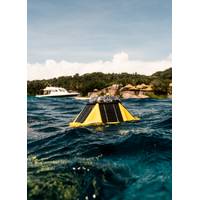
ASL and Sofar Ocean Engage in Marketing, Distribution Partnership
ASL Environmental Sciences Inc. has announced a new strategic marketing and distribution partnership with Sofar Ocean, bringing innovative oceanographic solutions to Canada and Alaska. This collaboration strengthens ASL’s position as a trusted supplier of advanced ocean monitoring technologies while enhancing Sofar’s reach in northern markets.At the center of this partnership is the Sofar Spotter Platform a compact, solar-powered metocean buoy that delivers real-time data on waves, winds, sea surface temperature, barometric pressure, and more. Rugged yet portable, the Spotter Buoy connects
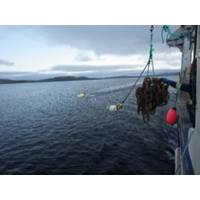
ASL Environmental: Tidal Currents Study Underway in Newfoundland and Labrador
ASL Environmental Sciences Inc. announces the successful completion of an initial multi-week study to measure tidal currents in collaboration with the Nunatsiavut Government and Oceans North. This initiative aligns with the Nunatsiavut Energy Security Plan to explore clean, renewable energy solutions for coastal communities and reduce dependence on diesel-generated electricity.Current transect surveys were initially carried out with Acoustic Doppler Current Profilers (ADCPs) over the broader study area. ADCPs were then deployed on moorings at three strategic locations within the Rigolet Narrows
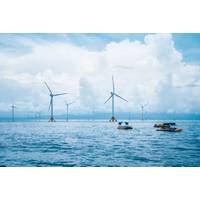
ASL to Work on Metocean Data for Offshore Wind Project in Atlantic Canada
ASL Environmental Sciences has secured research and development subcontract from Ireland-based Gavin & Doherty Geosolutions as part of a metocean data needs assessment for the development of offshore wind projects in Atlantic Canada for Natural Resources Canada.The primary objective of the work is to identify all types of metocean data needed to enable successful offshore wind project development in Atlantic Canada.Following a review of existing datasets, and a dataset gap analysis, ASL will be making recommendations for specific appropriate measures to collect necessary datasets. The analysis

ASL Concludes Metocean Survey for Canada’s Gas Transmission System
ASL Environmental Sciences has completed a six-month metocean survey for FortisBC Energy as part of its ongoing operations and maintenance activities supporting its stewardship of the Vancouver Island’s gas transmission system.Wave buoys and subsea current profilers were deployed from December 2023 to June 2024, with a mid-program servicing trip in March 2024.All subsea equipment and wave buoy mooring anchors were successfully recovered, with full recovery of all datasets. The field program measured directional waves and subsea currents at six individual moorings deployed at three strategic
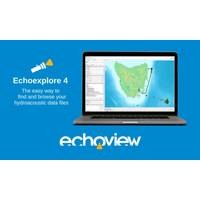
Echoexplore 4 aims to Simplify Hydroacoustic Data Management
simplify hydroacoustic data file management.Key highlights of Echoexplore 4 include:New file format support: Echoexplore 4 is equipped to read a significantly expanded range of files (compared to earlier releases). Scan, sort and catalog data formats from more than 75 echosounder and sonar models from ASL Environmental, Blueprint Subsea, BlueView, Furuno, Kongsberg Discovery, Navico, Norbit, Nortek, R2Sonic, Reson, Simrad, Sonic, Sound Metrics, WASSP, and more - matching Echoview’s complete range of supported data formats.Expanded licensing: Introducing new software license activation and management
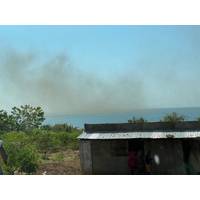
AZFP Monitors Diving Insects in Lake Malawi
, Malawi, have now completed their field work. This work centered on examining the unmatched diel migration of the aquatic larvae of the Chaoborus edulis, a midge fly that is abundant in Lake Malawi, East Africa. For more details on his winning proposal CLICK HERE.The goal of this research was to use ASL’s multifrequency AZFP to better understand the physiology and ecology of Chaoborus edulis larvae, the deepest free-diving insects in the world. The AZFP revealed that these aquatic midge larvae dive 200 m into the hypoxic zone of the lake during the day to avoid fish predation. Fish avoid

ASL’s Fissel Named a Fellow of CMOS
The Vancouver Island CMOS Center and ASL co-hosted a reception and award presentation ceremony at the University of Victoria, University Club, last month to honor those that have contributed significant scientific achievements. At theceremony, ASL’s David Fissel was named a Fellow of the Canadian Meteorological and Oceanographic Society (CMOS).Fissel was educated at the University of British Columbia, earning a B.Sc. in Honors Physics in 1971 and an M.Sc. in Physical Oceanography in 1975. His graduate research, carried out under Professor Steve Pond, was followed, in 1975, by working as a
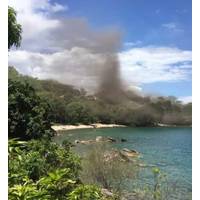
Dr. Matthews named 2022 Acoustic Zooplankton Fish Profiler (AZFP) Award Contest Winner
ASL Environmental Sciences announced Dr. Philip Matthews as the winner of the sixth annual Acoustic Zooplankton Fish Profiler (AZFP) early career scientist award contest. Dr. Matthews is an Associate Professor in the Department of Zoology at the University of British Columbia (UBC) and runs the Comparative Respiratory Physiology and Biomechanics laboratory.Dr. Matthews will be using a multi-frequency AZFP to understand the physiology and ecology of the deepest diving insect in the world—the Chaoborus edulis of Lake Malawi in southeastern Africa. He will be leading a team of two UBC graduate

ASL Hires Chawarski as Biological Oceanographer
ASL Environmental Sciences Inc. announced the appointment of Julek Chawarski to the position of Biological Oceanographer. Chawarski contributes nearly a decade of experience in fisheries science, with expertise in forage fisheries and biological oceanography in coastal and deep ocean ecosystems. He will be responsible for developing consulting services for ASL's ocean monitoring clients and will develop new tools for hydroacoustic studies of aquatic ecosystems.Previous to his appointment at ASL, Chawarski completed a Masters in Marine Biology at the University of Maine. During his studies he



 December 2025
December 2025





